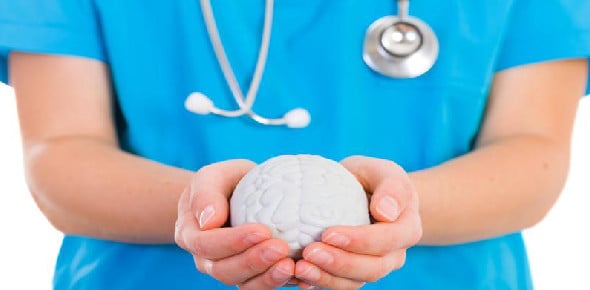Quiz 5: Nursing care Of The Client With Special Health Needs: Psychosis
-
The patient taking pemoline (Cylert) should have ____________ _____________ tests done periodically to monitor for adverse side effects.
Select correct answer from responses provided. Be aware of questions requiring more than one answer. Fill-ins will be marked incorrect for spelling errors. There are ten questions.

Quiz Preview
- 2.
Many clients taking medication for treatment of schizophrenia experience conditions which contribute to ________________ with treatment. These conditions include intolerance of life-long requirement for medication and a perception that medication is no longer required after the client starts to feel better.
Explanation
The inability to tolerate a daily requirement for medication with significant side effects for the rest of one's life and the perception that medication is generally not beneficial are basic reasons for medication noncompliance. Be aware that these two issues may be experienced by the client in a variety of ways.Rate this question:
- 3.
___________________________, photosensitivity, and sedation are all potential side effects of the phenothiazine antipsychotic medications.
Explanation
Thorazine, Prolixin, and Mellaril are examples of phenothiazine antipsychotic medications.Rate this question:
- 4.
A client with schizophrenia has been started on medication therapy with quetipine fumarate (Seroquel). The nurse determines that the client is experiencing the intended effects of the medication if which of the following client behaviors is observed?
-
Decreased appetite and food intake
-
Taking sips of water for dry mouth
-
Presence of fixed stare
-
Absence of delusional statements
Correct Answer
A. Absence of delusional statementsExplanation
Seroquel is an atypical antipsychotic medication that is used to treat symptoms such as hallucinations, delusions, and altered thought processes. These symptoms are characteristic of psychosis and should decrease with effective treatment. Fixed stare (option 3) and dry mouth (option 2) are side effects of therapy. If you focus on the client's diagnosis and the medication, you may recall that Seroquel is an antipsychotic medication effective against positive symptoms of schizophrenia,like delusions.Rate this question:
-
- 5.
Barbiturates and sedative hypnotics are used for short-term treatment of insomnia or for sedation to relieve anxiety, tension, and apprehension. All of the following medications are sedative hypnotics except for:
-
Choral hydrate (Somnote)
-
Ramelteon (Rozerem)
-
Dextroamphetamine sulfate (Dexedrine)
-
Zolpidem (Ambien)
Correct Answer
A. Dextroamphetamine sulfate (Dexedrine)Explanation
Dextroamphetamine sulfate (Dexedrine) is a central nervous system stimulant, a medication effective in controlling attention deficit hyperactivity disorder.Rate this question:
-
- 6.
A nurse has been caring for a hospitalized client who has been taking clozapine (Clozaril) for the treatment of a schizophrenic disorder. Which laboratory study prescribed for the client will the nurse specifically review to monitor for an adverse effect associated with the use of this medication?
-
Platelet count
-
Cholesterol level
-
White blood cell count
-
Blood urea nitrogen
Correct Answer
A. White blood cell countExplanation
Clozapine is associated with hematologic reactions like agranulocytosis (lack of nuetrophils, eosinophils and bsaophils, the granulocytic white blood cells) and mild leucopenia (abnormal decrease in WBCs to < 5000/mm3, usually related to medications or bone marrow failure). White blood cell count should be monitored and the nurse should observe for symptoms like sore throat, malaise, and fever.Rate this question:
-
- 7.
All of the following are mood-stabilizers and atypical antipsychotic medications with the exception of:
-
Olanzapine (Zyprexa)
-
Quetiapine (Seroquel)
-
Risperidone (Risperdal)
-
Carbamazepine (Tegretol)
Correct Answer
A. Carbamazepine (Tegretol)Explanation
Carbamazepine (Tegretol) is a mood stabilizer and anticonvulsant. All mood stabilizers affect cellular transport mechanisms and enhanced serotonin or gamma-aminobutyric acid (GABA) functioning. Both serotonin and GABA are neurotransmitters associated with mood. Tegretol is most frequently used to treat epilepsy and bipolar disorder. Other off-label uses of Tegretol include treatment of trigeminal neuralgia, ADHD, and schizophrenia.Rate this question:
-
- 8.
A client is receiving a daily dose of oral fluphenazine (Prolixin). The nurse would teach the client to do which of the following to minimize common side effects of this medication?
-
Have blood pressure checked once a week.
-
Monitor pulse daily
-
Eat snacks at midmorning and bedtime.
-
Use hard, sour candy or sugarless gum.
Correct Answer
A. Use hard, sour candy or sugarless gum.Explanation
Fluphenazine is classified as a phenothiazine antipsychotic medication. Dry mouth is a common side effect. Frequent mouth rinsing with water, sucking on hard candy, and chewing sugarless gum will alleviate this common side effect. Hypotension and hypertension are rare side effects of oral fluphenazine. Fluphenazine does not affect the pulse. Weight gain is a common side effect, and frequent snacks will worsen the problem. The strategic words are “oral” and “minimize common side effects.” Eliminate options 1 and 2 because they are assessments rather than interventions, and as such, they cannot “minimize” a side effect.Rate this question:
-
- 9.
The most common side effects of central nervous system stimulants include: (Select all that apply)
-
Tachycardia
-
Anorexia and weight loss
-
Allergic reactions
-
Headache
-
Dizziness and agitation
Correct Answer(s)
A. Tachycardia
A. Anorexia and weight loss
A. Dizziness and agitationExplanation
CNS stimulants which increase agitation and activity in adults, may produce a calming (paradoxical) effect in children and increase the ability to pay attention and respond to environmental stimuli appropriately. However, stimulation is possible and may be dose related; therefore, additional stimulants like caffeine and chocolate should be avoided. Allergic reactions and headache are common side effects of barbiturates and anxiolytic medications, respectively.Rate this question:
-
- 10.
Select from the following statements the descriptions which apply to phenothiazine antipsychotic medications; (Select all that apply)
-
Antipsychotics affect dopamine receptors in the brain, thereby reducing the psychotic symptoms.
-
Neuroleptic malignant syndrome is a common side effect of antipsychotic therapy which usually occurs after initiating therapy or when combinations of medications are used.
-
The most serious side effects of antipsychotic medication are the extrapyramidal side effects such as Parkinson's-like symptoms, rigidity, and abnormal or involuntary movements of the eyes, body and extremities.
-
Typical antipsychotics are more effective for positive symptoms of schizophrenia, such as hallucinations, aggression, and delusions.
Correct Answer(s)
A. Antipsychotics affect dopamine receptors in the brain, thereby reducing the psychotic symptoms.
A. Typical antipsychotics are more effective for positive symptoms of schizophrenia, such as hallucinations, aggression, and delusions.Explanation
(a) & (d) are true statements that can be found in the Silvestric NCLEX Review text on page 982. Neuroleptic malignant syndrome is an uncommon and life-threatening side effect of antipsychotic therapy. It is true however that NMS symptoms (high fever, muscle rigidity progressing to coma) tend to appear after initiating therapy or when combinations of medications are used. The extrapyramidal side effects such as Parkinson's-like symptoms, rigidity, and abnormal or involuntary movements of the eyes, body and extremities, are common but reversible side effects. Symptoms of tardive dyskinesia are considered irreversible extra-pyramidal side effects.Rate this question:
-
Quiz Review Timeline (Updated): Mar 21, 2023 +
Our quizzes are rigorously reviewed, monitored and continuously updated by our expert board to maintain accuracy, relevance, and timeliness.
-
Current Version
-
Mar 21, 2023Quiz Edited by
ProProfs Editorial Team -
Oct 11, 2010Quiz Created by
PNweekend
Do I Have Symptoms Of Psychosis?
Does it occur to you, "Do I have symptoms of psychosis?" If so, then this quiz is meant for you. In the condition of psychosis, people get somewhat disconnected from...
Questions:
10 |
Attempts:
345 |
Last updated:
Jan 03, 2024
|
Psychosis Test - Do I Have Psychosis?
Mental health is a sensitive topic. Fortunately, with awareness and proper guidance, people can flourish. Take this "Do I have Psychosis?" test to understand your...
Questions:
10 |
Attempts:
1276 |
Last updated:
Jan 03, 2024
|
Psychosis In Young People
Josh is a 17 year old man who lives at home with his mother and younger siblings. He presents to the ED one Saturday evening with his mother. Josh is agitated and is...
Questions:
5 |
Attempts:
185 |
Last updated:
Mar 19, 2023
|
Personality, Mood Disorders, And Suicidal Behavior | NCLEX Quiz 210
Welcome to the "Personality, Mood Disorders, and Suicidal Behavior" quiz. This thought-provoking assessment delves into the intricate interplay between personality...
Questions:
10 |
Attempts:
6440 |
Last updated:
Sep 08, 2023
|
|
Personality, Mood Disorders, And Suicidal Behavior | NCLEX Quiz 209
All questions are shown, but the results will only be given after you’ve finished the quiz. You are given 1 minute per question, a total of 10 minutes in this quiz.
Questions:
10 |
Attempts:
1190 |
Last updated:
Mar 22, 2023
|
Psychiatric Nursing | NCLEX Quiz 195
All questions are shown, but the results will only be given after you’ve finished the quiz. You are given 1 minute per question, a total of 10 minutes in this quiz.
Questions:
10 |
Attempts:
3087 |
Last updated:
Aug 22, 2023
|
 Back to top
Back to top








